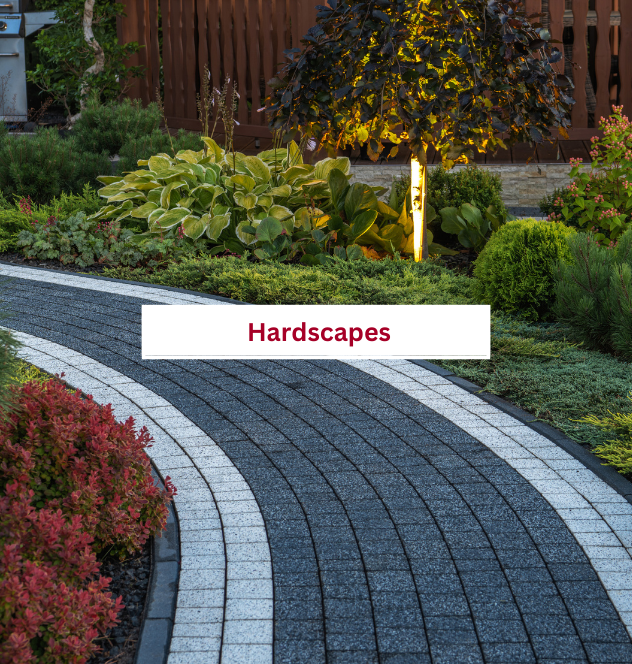
How to Build a Paver Fire Pit That’s Easy and Affordable

3 Great Reasons to Install a Paver Patio

How to Build a Paver Fire Pit That’s Easy and Affordable

3 Great Reasons to Install a Paver Patio
Different Types of Concrete Blocks—How To Tell Them Apart
You may know that concrete masonry units (CMUs for short) are durable, environmentally friendly, and energy-efficient, but did you know how versatile shapes and sizes they are produced in? It’s true, there are several different types of concrete blocks created to suit specific needs. It’s just one more reason to consider this high-quality building material for your next project.
Hollow vs. Solid Concrete Blocks
There are two primary types of concrete block: hollow and solid.
- Hollow concrete blocks are manufactured with holes in them and are sometime referred to as Knock Out Block. They are lighter and are often used in building large structures because the holes reduce dead load and make it easier to run wiring, piping, or rebar through them.
- Solid concrete blocks are fully solid and look like large grey bricks. They work well for foundations, steps, pavement, or walls designed to be protective against natural elements like high winds.
Within these two categories you can find variations in shape, size, and function.
Hollow Block Types
- Split Face—Split face concrete blocks have two smooth, flat ends and one smooth, flat length. The second length is textured. They are created by manufacturing a larger block and “splitting” it to reveal the aggregate. It’s popular for building because of its unique texture.
- Stretcher Block—Stretcher concrete blocks are smaller than standard hollow concrete blocks. They have a flat length and specially shaped ends that are used to connect the corner in masonry work.
- Corner Block—Corner concrete blocks have flat lengths, one flat end and one specially shaped end. The specially shaped end locks with the stretcher block and the flat end creates the corner.
- Bullnose Block—Bullnose concrete blocks are like corner blocks in function, but the visible end is rounded for a different aesthetic effect.
- Pillar Block—Pillar concrete block is probably what you think of when you imagine a hollow block. The length and ends of the pillar block are flat. This block is used when both ends of a corner are visible, as in the case of pillars or piers.
- Column Block—Column concrete blocks are square blocks with a single hole in the middle. They’re often stacked on top of each other and reinforced from the inside to create a column.
- Jamb Block—Jamb concrete blocks are specially shaped to accommodate large openings for double hung windows. They’re connected to stretcher or corner blocks.
- Partition Block—Partition concrete blocks are long, thin blocks with standard-size lengths, but short ends. They can have two or three holes and are used to create partitions.
- Lintel Block—A lintel block looks like solid, rectangular block with a deep, u-shaped groove cut along the length of the block. These blocks make space for beams or door lintels and help with load-bearing.
Solid Block
- Solid Concrete Masonry Unit—This is a solid concrete block unit made in various sizes and is typically used for foundations, steps, or wall designs to protect against natural elements like high wind.
- Concrete paver—A concrete paver are rectangular or square block of concrete designed for paving or walkways. They often come in a variety of colors and sizes to add aesthetic value to a hardscape project.
- Concrete Brick—A concrete brick is what most people think of when considering a solid concrete block. These are blocks of concrete made of cement and aggregate.
Cement Blocks ARE NOT Concrete Block
Concrete and cement are often used interchangeably but are actually different products. In fact, cement is an ingredient of concrete.
- Cement is a mix of limestone, shale, iron ore, and clay that is crushed to a very fine power. The power is heated to high temperatures and then combined water to create cement.
- Concrete is a mixture of aggregates, cement, and water. Concrete continues to harden as it ages.
Cinder Blocks ARE NOT Concrete Blocks
Like cement blocks, cinder blocks is a term for concrete blocks. However, cinder blocks are very different from concrete blocks. Cinder blocks are made from coal cinders and compromise the integrity of the block via bowing and buckling. Next time you search, be sure to choose a concrete block of cinder block – Concrete block is the strongest building material in the world and continues to harden as it ages. There are several products on the market that are made with cement and can be used in masonry, construction, and hardscapes. These products are commonly confused with concrete blocks but are not made with the same materials and have different properties.
- Lightweight Bock—The lightweight block is made from foam, fly ash, and cement. While it does have benefits such as good insulation and fire protection it is more porous than cement and can trap and retain moisture.
- Autoclaved Block—Autoclaved block, or AAC, is made from aggregate but is 80% air. It offers great sound and temperature insulation and allows for the use of nails and screws. But it’s not as strong as concrete and isn’t recommended for load-bearing walls.
- Cinder block—Cinder block is made from slightly different ingredients than concrete. Coal cinders are used as a substitute for sand and gravel in concrete resulting in a product that is lighter and less durable.
Learn More
ACME Block and Brick is your expert guide to concrete block. Our company is based on the highest standards of quality and committed to delivering the best possible service. Thanks to our full product lines, we deliver block supply fast, so you can get started on your project quickly. Browse our concrete products to find the perfect block for your next project.











